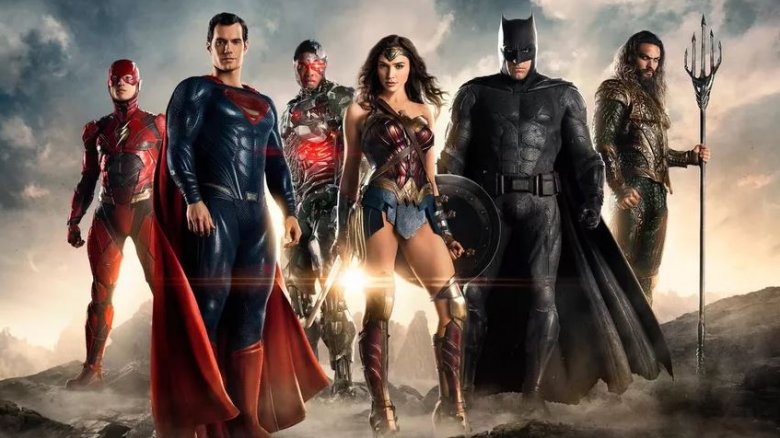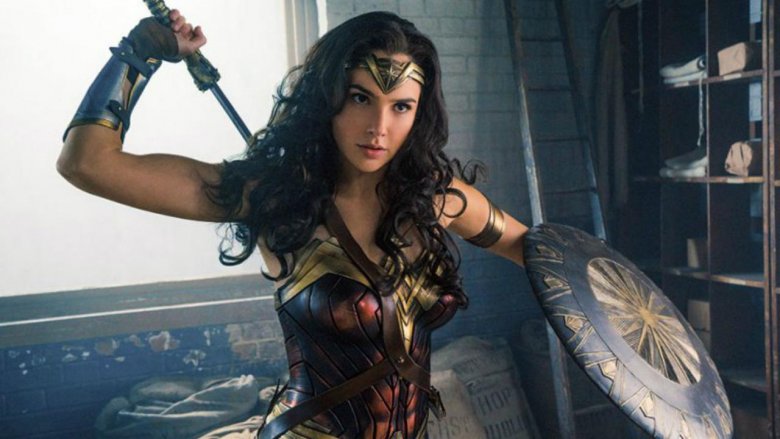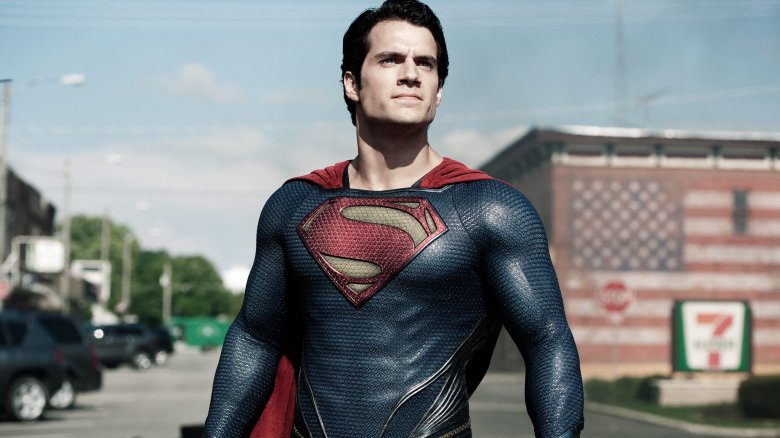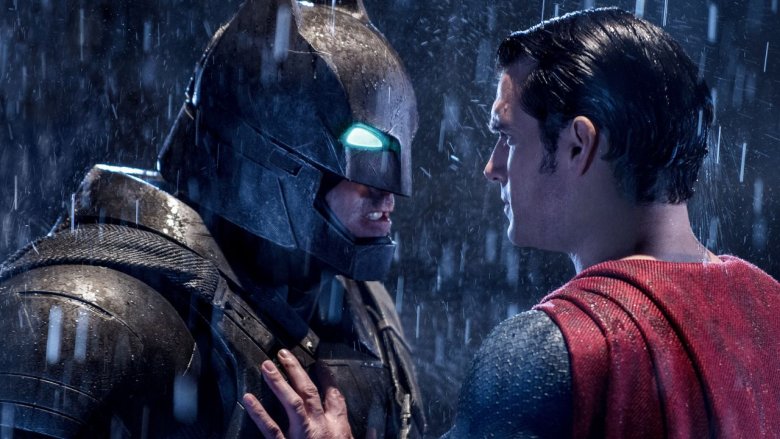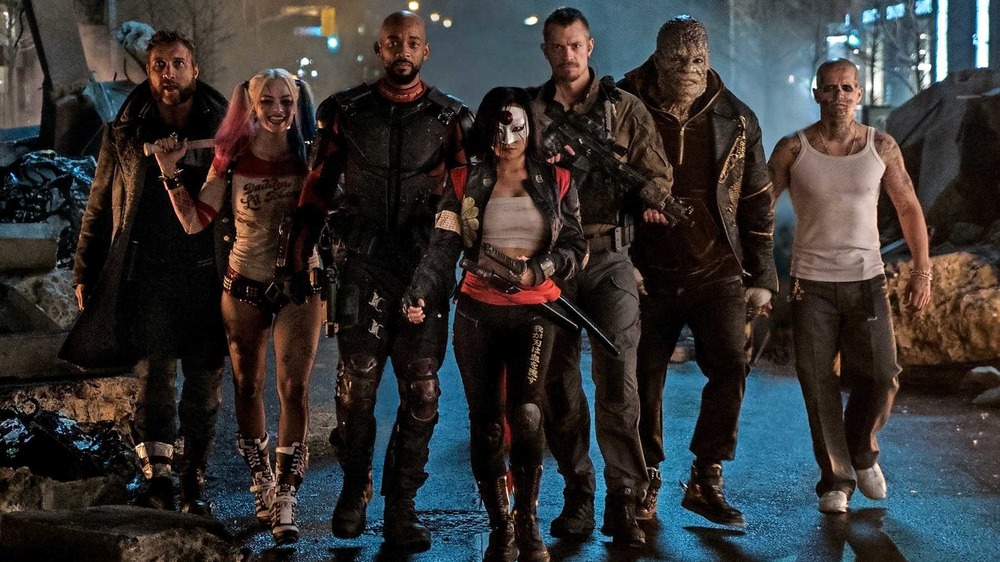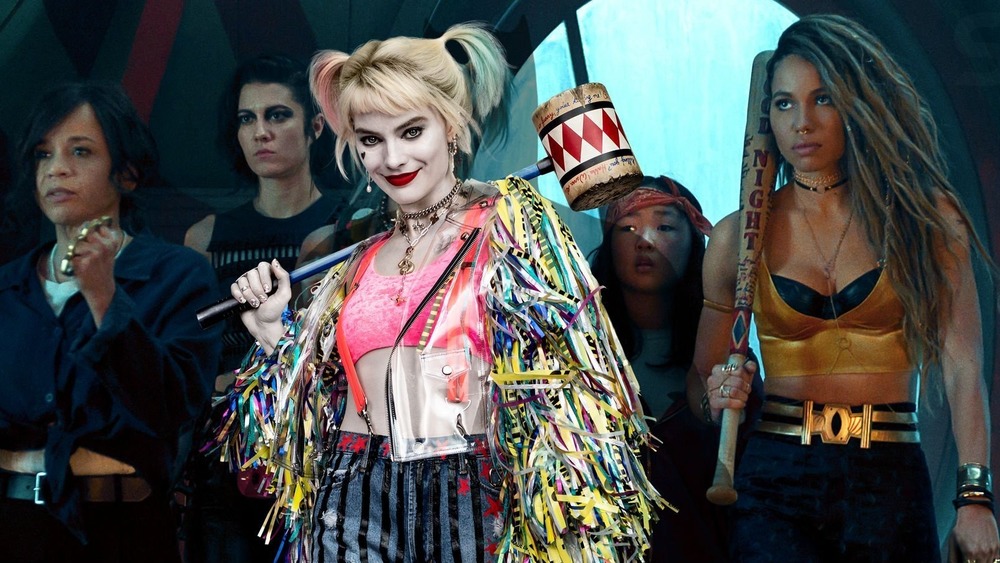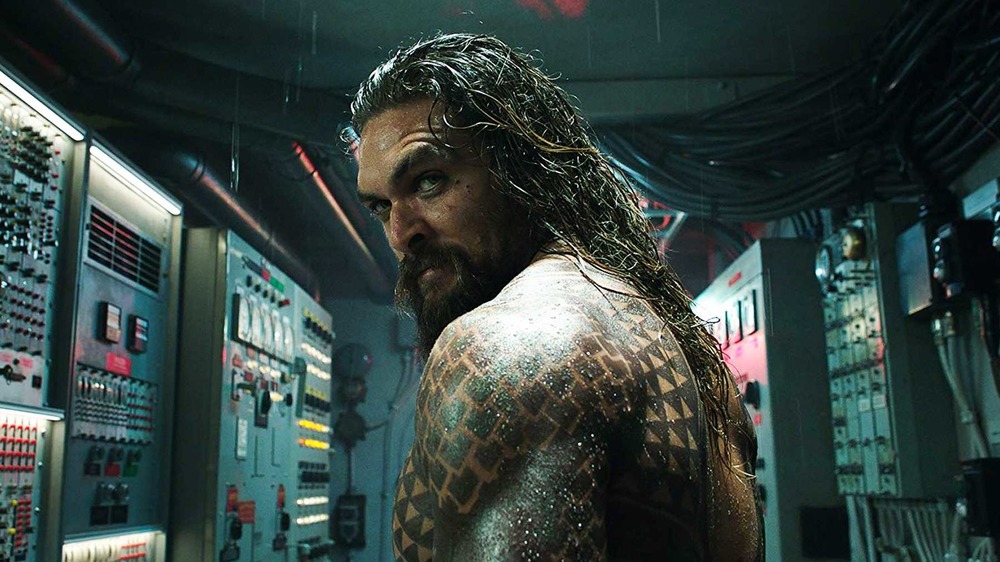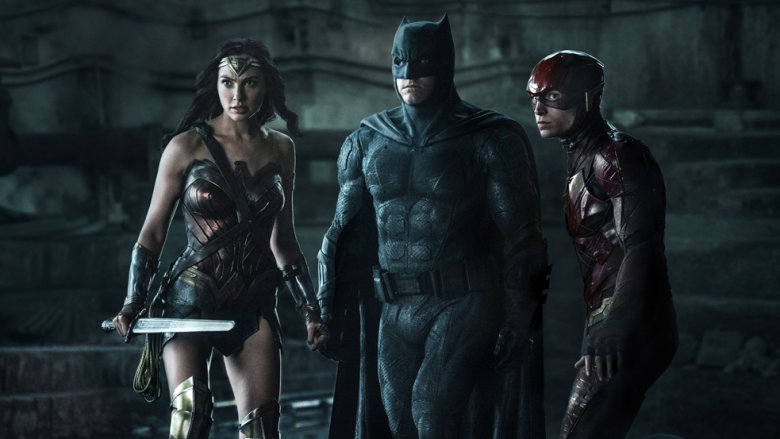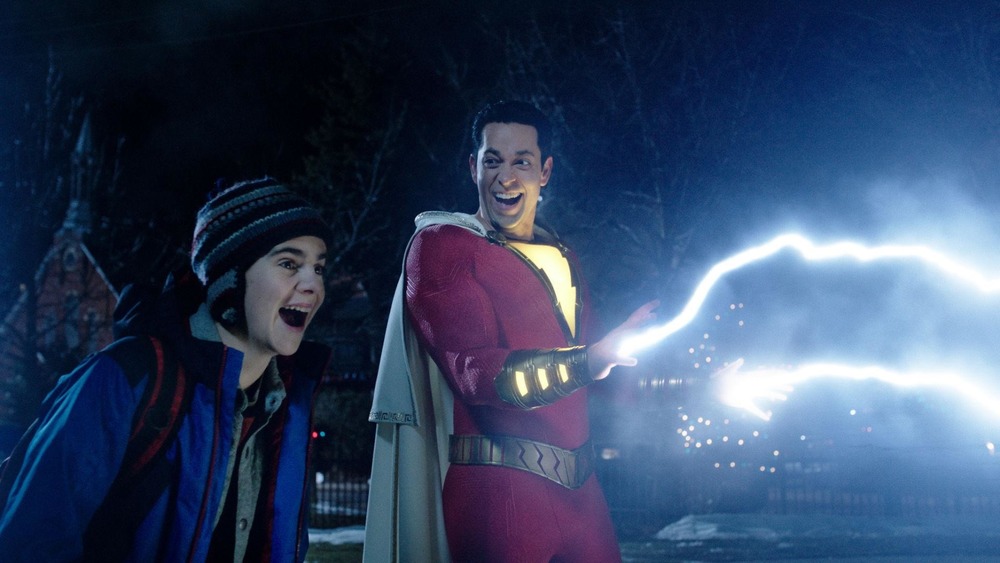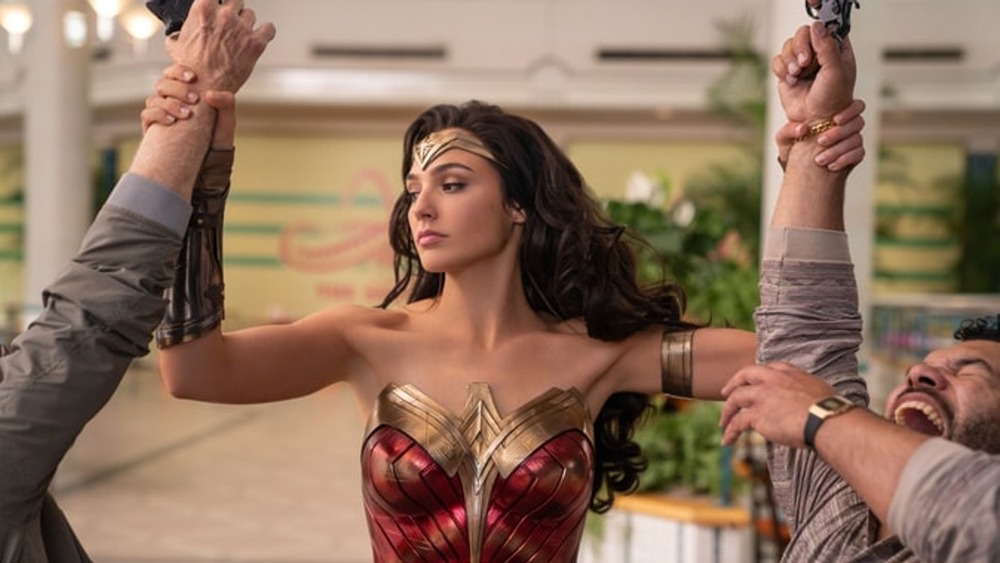This Is The Right Order To Watch Every DC Extended Universe Movie
In spite of its various ups and downs, the DC Extended Universe (DCEU) continues to chug along at a steady pace. Since 2013's Superman film Man of Steel, it's amassed a library of nine films and counting. A number of other movies are planned in the coming years, including sequels to Suicide Squad and Aquaman, as well as a new take on Batman starring Robert Pattinson and other new solo films featuring the Flash, Batman, and Dwayne Johnson's Black Adam. So with this cinematic universe already big and continually getting bigger, it's definitely worth catching up on everything that's been released so far. But what's the right order to watch every DC Extended Universe movie?
The question is not quite as easy to answer as it seems. Sure, there are the two obvious routes you can take when it comes to watching the DCEU films. You could watch them in the order they were released, since if you saw them all in theaters, that's what you would've done anyway. Or you can watch them in chronological order, which has its own sort of logic to it. However, neither of these schedules offers the best viewing experience (in our humble opinion). Instead, we've come up with our own viewing order for the DCEU that we believe does the best job of introducing you to the characters, building the universe, and getting you hyped for what happens next. So take a look below at the right order to watch every DC Extended Universe movie.
First up, we've got Wonder Woman
With its story taking place during World War I, Wonder Woman is chronologically the first film in the DCEU by a good margin. But that's not the main reason why we've selected it for the first spot. You see, Wonder Woman is also the best-reviewed DCEU movie, and when beginning a lengthy movie marathon such as this, it definitely helps to start off on the right foot. And kicking off with what's arguably the best movie in the series will definitely give you some motivation to keep watching, even if it's only to see when Princess Diana pops back up again.
Another reason to start off with Wonder Woman is that the film does a great job of introducing her character — much better than her actual rushed intro in Batman v Superman: Dawn of Justice. This is important because the character has become the face of the DCEU. Superman, Batman, and Wonder Woman make up the Holy Trinity of DC Comics characters, but in the DCEU, Gal Gadot's Wonder Woman is the undisputed queen. Superman actor Henry Cavill and Batman actor Ben Affleck have both already exited the franchise, but even before they left, Wonder Woman was the star of the show thanks to her ultra-successful solo film and her arguably being the best part of both Batman v Superman and Justice League. The DCEU at present lives or dies by Wonder Woman, so there's no better way to marathon the franchise than by beginning with her most prominent role. Plus, her upbeat attitude and her winning combination of hope and courage provide some much-needed light before heading into the grimmer, darker films.
Man of Steel is next in our DC Extended Universe marathon
Man of Steel is the film that started the DCEU franchise. Released in 2013, the movie didn't really do much universe-building. There was no Nick Fury-style post-credits scene like in rival MCU's Iron Man, and this Superman flick truly functions as a standalone film. But despite its lack of immediate connectivity to other films of the franchise, it's still hugely important to watch it early on in your marathon due to its introduction of Superman. Clark Kent's alter ego goes on to influence several other films in the franchise, as do his actions in this movie.
The film features Superman battling fellow Kryptonian General Zod on the streets of Metropolis, and the two aliens really make a mess of things. It's this massively destructive battle, and the fact that a superpowered individual like Supes even exists, that drives the plot of the early DCEU. Superman's existence manages to motivate both Batman and Lex Luthor to try and put an end to him in Batman v Superman. Plus, his subsequent absence creates a world desperate enough to consider the idea of criminal superheroes in Suicide Squad, and it leaves the planet vulnerable to alien invasion in Justice League.
Superman's influence on the DCEU overall is even greater than that of Wonder Woman (even if he hasn't proven to be as impactful in the hearts and minds of fans), since his introduction in Man of Steel essentially kicks off the main storyline of the interconnected franchise. Therefore, Man of Steel earns an early slot in the DCEU viewing order.
Batman v Superman: Dawn of Justice is third on the watchlist
Although Man of Steel is technically the first DCEU film, that honor really ought to belong to Batman v Superman: Dawn of Justice. Indeed, the term DCEU didn't even exist until BvS came out. And though Man of Steel was meant to be a backdoor start to a new franchise of superhero films if successful, it was first and foremost a solo film. BvS, by contrast, is all about building a connected cinematic universe and doing it quickly. Not only does the film act as a sequel to Man of Steel, focusing on the fallout of the destruction caused by Superman and Zod in that film, but it also introduces the character of Batman to the universe. And Wonder Woman. And, via a series of short video clips, the rest of the Justice League — Aquaman, Cyborg, and the Flash. And it introduces the concept of Mother Boxes, the MacGuffins that will later feature heavily in Justice League. It's a lot to take in.
In between all this world-building are the film's two main conflicts. The first is between Batman and Superman, with the second taking place between the evil Doomsday and a united front of Batman, Superman, and Wonder Woman. (Plus, Lex Luthor is running around, causing all sorts of mischief.) While Doomsday is ultimately defeated, Superman is killed in the process, which has major ramifications for two later movies on our viewing list. So given the importance of its plot moving forward, combined with the sheer amount of setting up the film attempts, Batman v Superman is a must-watch after Man of Steel.
Suicide Squad takes place after Superman's death
Of all the films in the DCEU, Suicide Squad is the hardest to fit in anywhere. Other than cameos from Batman and the Flash, it doesn't really feature any superheroes, just supervillains who are put in a position to save the day and (mostly) rise to the occasion. Its tone is also different from any other DCEU film — in fact, Suicide Squad's tone is often different from scene to scene. Its most lasting legacy is introducing Margot Robbie's Harley Quinn, who was the most well-received part of the film. Unfortunately, even Harley isn't treated very well in this movie, in which she's shown to be still under the thumb of the Joker.
Suicide Squad takes place at a very specific moment in time in the DCEU. After Superman showed up, the world became aware of "metahumans" — superpowered individuals — and had to figure out how to live with them. That became even more troubling in the wake of his death in BvS, leading the government to decide that someone needs to take up the slack, and of course they'd prefer it to be someone they can control. Who could be better for the job than supervillains? But since Superman returns to the land of the living in Justice League, thus negating the original need for the Squad, it only makes sense to watch Suicide Squad directly after Batman v Superman, when his absence still feels fresh and relevant.
Birds of Prey redeems Harley Quinn
Harley Quinn has a huge fanbase, who were, of course, happy to see her reach the big screen in Suicide Squad. That joy was mitigated, however, by the ending of the film, in which she leaves with the Joker, a partner who has manipulated and mistreated her since Day One. Fortunately, Harley's next appearance in the DCEU makes everything better, and that's why you should watch it next.
As its full title makes clear, Birds of Prey (and the Fantabulous Emancipation of One Harley Quinn) tells the story of Harley becoming her own person and finding her own power in the wake of her breakup with the Joker. Along the way, she teams up with some of DC's most dynamic female street-level heroes: Huntress, Black Canary, Cassandra Cain, and Detective Renee Montoya. The Joker doesn't even appear onscreen in the movie, although the role of maniacal, murderous villain is ably filled by the man called Black Mask.
Aquaman is an awesome entry in the DC Extended Universe
Aquaman was the first DCEU film to debut after Justice League, but it actually makes the most sense to watch it before that film. Justice League is, at best, a flawed movie. The plot is rushed, there are too many characters to introduce, and the tone is all over the place. The film underperformed at the box office and was unpopular with both critics and fans alike, which is why Aquaman hardly mentions the events of Justice League at all. Save for one throwaway line where the battle against Steppenwolf from the film is brought up, Aquaman completely ignores Justice League. This was by design, as it was obvious the DCEU needed a recalibration after Justice League failed to become the franchise's equivalent to the MCU's The Avengers. So why, then, are we recommending you watch Aquaman before Justice League?
Because Justice League needs all the help it can get. Aquaman is a bona fide blockbuster. It got solid reviews, and it's the only movie in the DCEU so far to earn over a billion dollars at the worldwide box office. The film also does an excellent job of introducing Aquaman, aka Arthur Curry, as well as the kingdom of Atlantis. Getting to know the character in his element here makes it much more satisfying to see him again in Justice League — where his intro is more hurried — just as it is more satisfying to meet Wonder Woman in her solo film ahead of seeing her in BvS.
Justice League has to come after Aquaman
Congratulations, you've made it to Justice League! Meant to be the DCEU version of The Avengers, the film suffered from lacking the buildup that was present in its MCU counterpart. Whereas Marvel had the benefit of two Iron Man movies, The Incredible Hulk, Thor, and Captain America: The First Avenger to build out its character roster, Justice League had to make do with only Man of Steel, Batman v Superman, and Wonder Woman, with Suicide Squad being almost entirely unrelated. But now that you've watched Aquaman, you should be geared up to see four established characters join forces in Justice League, while only having to get to know two others in Cyborg and the Flash.
With Justice League now having to do less introductory work thanks to the fact that you've already viewed Aquaman, you can enjoy the movie on another level. There is some fun to be had in the film, especially if you're able to turn off your brain and not have to worry too much about who Aquaman is along with the other characters you're meeting for the first time. Basically, the decision to watch Justice League at this point comes down to the idea that the more you know about the characters, the more fun and satisfying the movie will be. That familiarity with characters from other films is what made The Avengers work so well, and mimicking the formula with this DCEU viewing order will have a similar effect on Justice League.
Shazam! makes superheroes fun again
If Aquaman marked a recalibration of the DCEU after Justice League, then Shazam! almost seems like a reboot. This is a DCEU film that features no characters from any other films and no mention of their events. There is a pseudo-Superman cameo in the film, but the character's face isn't seen, and his costume is different from the one worn by the DCEU Superman up to this point. He wasn't even played by Henry Cavill, whose run as the character was rumored to be ending at the time. In other words, he doesn't feel like the Superman of the DCEU ... and it feels like that was probably intentional.
Shazam! marks a major shift for the DCEU. The post-Justice League retooling that started with Aquaman was taken to another level with Shazam!, as the movie doesn't really feel anything like a DCEU movie. Shazam! is much lighter in tone, much brighter, much funnier, and much more joyful than its DCEU brethren. The film's post-credits scene even features a talking caterpillar! Can you imagine something like that happening in the ultra-dark and humorless Batman v Superman? Didn't think so. But we seem to be entering an era of DC movies in which the tone of each film is determined by its individual needs, instead of trying to match the darkness that came before.
Wonder Woman 1984 brings things full circle
If you started watching all the DCEU movies with the first Wonder Woman, it makes sense to end with the second one. As the most recent DCEU movie, Wonder Woman 1984 also offers a sense of what the DCEU may look like in the future. After Birds of Prey and Shazam! stretched the universe way out to find new characters and a new playfulness, this movie brings some of that lighthearted and exploratory spirt to one of the central Justice League members.
Of course, since this movie takes place in 1984, Wonder Woman hasn't actually met Superman or Batman yet. She's still fighting her own battles, like she's been doing since World War I, in this case against the jealous Cheetah and the greedy Maxwell Lord. Central to the plot is a magical wishing stone, something that never could have existed in the old self-serious DCEU — even in the original Wonder Woman — but is now available as a tool for storytelling that nobody needs to spend too much time justifying or explaining. While it has its flaws, Wonder Woman 1984 is a lot of fun, and that's an encouraging sign for the franchise.
